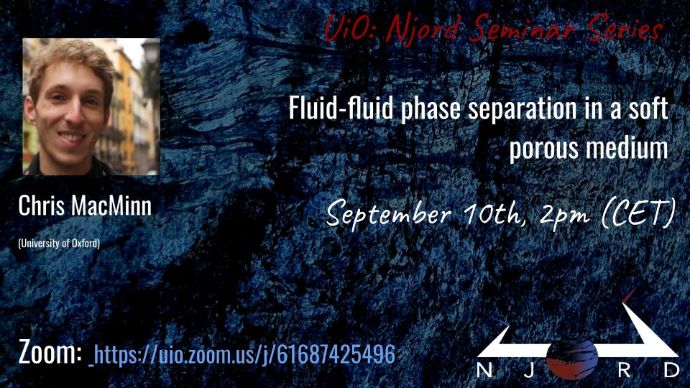Abstract:
The interactions of two fluids within a porous medium depend strongly on flow conditions, wettability, and the structure of the pore space. At the pore scale, these interactions are characterised by the formation of wetting films that coat solid surfaces and occupy corners and throats, and the formation of non-wetting blobs that occupy larger pore bodies. The invasion of non-wetting blobs into narrow throats is energetically unfavorable, but it can be forced with a sufficiently high pressure gradient. A soft porous medium is one in which the pore structure can deform in response to the flow.
The most striking feature of two-fluid-phase flow in a soft porous medium is the tendency of the non-wetting phase to enlarge the pore space by pushing the solid grains apart, to the point of forming macroscopic cavities in the medium. These cavities can be much larger than the pore scale, and they form spontaneously when the energetic benefit of reducing the Laplace pressure exceeds the energetic cost of deforming the solid skeleton. Here, we consider this process through the lens of phase separation, where a non-wetting phase separates (or not) from a fluid-fluid-solid mixture.
Informed by the thermodynamics and large-deformation poromechanics of this system, we construct a phase-field model in which two immiscible fluids interact with a poroelastic solid skeleton. Our model captures the competing effects of elasticity, confinement, flow, and fluid-fluid-solid interactions. We then use our model to consider an initial distribution of non-wetting fluid in the pore space that separates into multiple cavities. We identify the key parameters that control phase separation, the conditions that favor the formation of cavities, and the characteristic size of the resulting cavities. We complement this analysis with experimental observations.
Our results have implications for a wide variety of natural and industrial systems, such as the nucleation and growth of gas bubbles in lake beds and waste ponds.
You will find the complete schedule for Njord Seminar Series fall '21 here.
To get news, invitations to seminars and more from Njord, please go here to subscribe to our newsletter.
